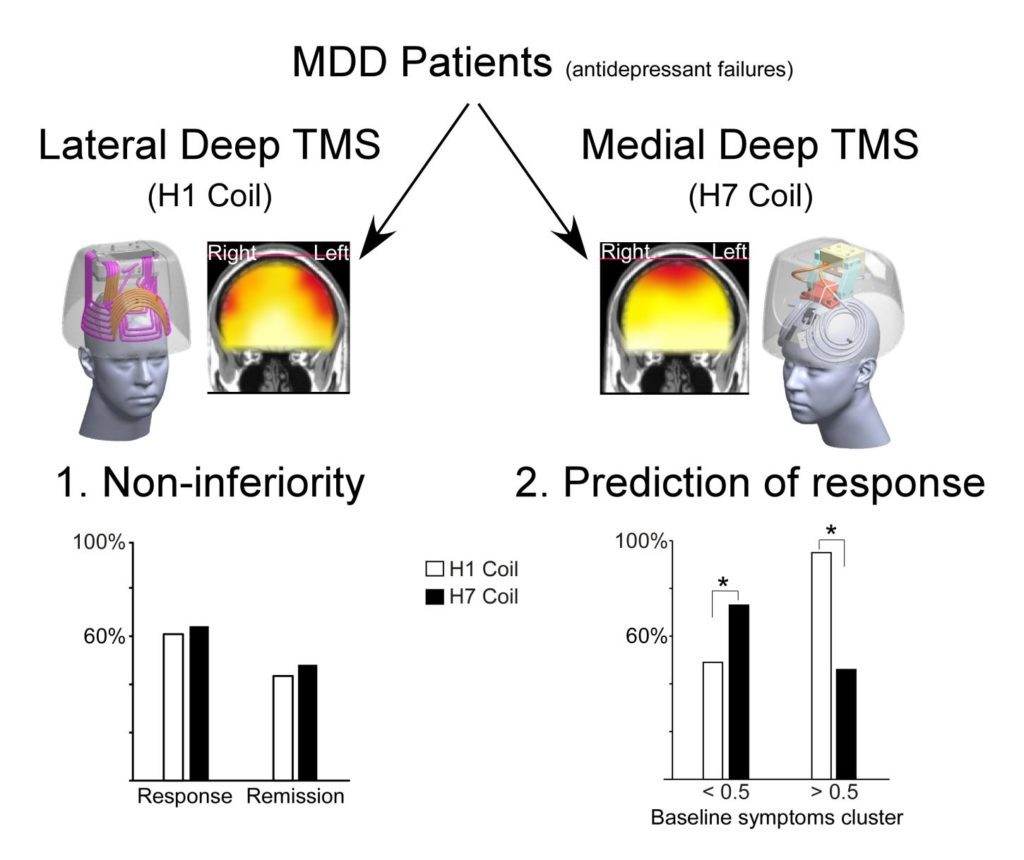Journal: The Journal of Clinical Investigation (JCI) Insight (Feb 2023)
Authors: Abraham Zangen, Samuel Zibman, Aron Tendler, Noam Barnea-Ygael, Uri Alyagon, Daniel M. Blumberger, Geoffrey Grammer, Hadar Shalev, Tatiana Gulevsky, Tanya Vapnik, Alexander Bystritsky, Igor Filipčić, David Feifel, Ahava Stein, Frederic Deutsch, Yiftach Roth, and Mark S. George
Major depressive disorder (MDD) can benefit from novel interventions and personalization. Deep transcranial magnetic stimulation (Deep TMS) targeting the lateral prefrontal cortex (LPFC) using the H1 Coil, was FDA-cleared for treatment of MDD, however recent preliminary data indicate that targeting medial prefrontal cortex (MPFC) using the H7 Coil might induce as good or even better outcomes.
Exploring whether Deep TMS targeting the MPFC is non-inferior to targeting LPFC, and whether electrophysiological or clinical markers for patient selection can be identified.
The present prospective multicenter randomized study enrolled 169 MDD patients who failed antidepressant treatments in the current episode. Patients were randomized to receive 24 Deep TMS sessions over 6 weeks, using either the H1 Coil or the H7 Coil. The primary efficacy endpoint was the change from baseline to week 6 in the Hamilton-Depression-Rating-Scores.
Clinical efficacy and safety profiles were similar and not significantly different between groups, with response rates of 60.9% for the H1 Coil and 64.2% for the H7 Coil. Moreover, brain activity measured by EEG during the first treatment session correlated with clinical outcomes in a coil-specific manner, and a cluster of baseline clinical symptoms was found to potentially distinguish between patients who can benefit from each Deep TMS target.

This study provides a new treatment option for MDD, using the H7 Coil, and initial guidance to differentiate between patients likely to respond to LPFC versus MPFC stimulation targets, which require further validation studies.